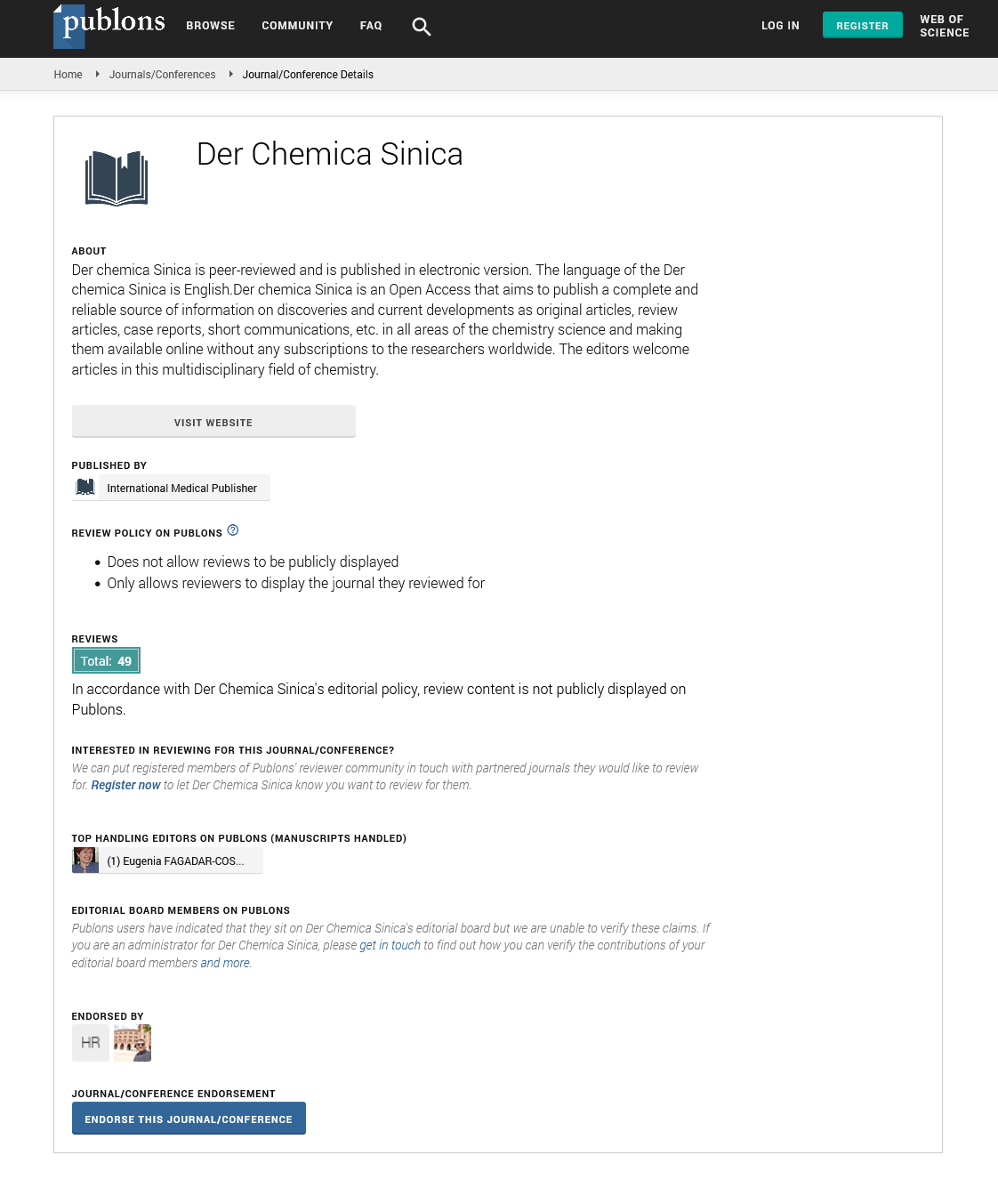ISSN : 0976-8505
Der Chemica Sinica
Abstract
Synthesis, Antimicrobial Evaluation and Chemical Stability Studies of Novel Trisubstitued Benzimidazoles
Background: Development of new potent antimicrobials has remained one of the thrust research areas across the globe due to emergence of resistance among infectious microbe for clinically used antimicrobials. Structural similarity of benzimidazole with purines and its presence in metabolite of vitamin B12 unveils it as a potential nucleus for development of novel antimicrobials.
Objective: With this background, the current study is aimed at designing, synthesizing and exploring novel benzimidazole derived compounds as potential antimicrobial agents.
Method: Extensive literature study led to design of two series of 1,2,5-trisubstituted benzimidazole derivatives (4a-4f and 5a-5f). The designed compounds were synthesized from o-phenylenediamine, nicotinic acid, furfuraldehyde and varied benzoyl/benzyl chlorides through a 4-steps synthetic scheme. In-vitro antimicrobial evaluation was carried out by measuring zone of inhibition at different concentrations (1.56-100 μg/mL) of target compounds and streptomycin. Docking analysis was carried out using GlcN-6-P synthase as target enzyme as it is essential for microbial cell wall synthesis. Hydrolytic stability of the most active compound (4d) in GIT was evaluated in non-enzymatic simulated gastric and intestinal fluids through HPLC method.
Results: Compounds 4a, 4d and 4f exhibit good antibacterial activity, whereas 5a-5c have potent antifungal properties. Compound 4d is maximally lethal from the series and equipotent to streptomycin against S. aureus, E. coli and P. aeruginosa with MIC 4.16 ± 1.04, 5.20 ± 1.04 and 10.41 ± 2.08 μg/ml, respectively. Compound 5c (MIC 20.83 ± 4.16 μg/ml) was equipotent to fluconazole against C. albicans. Docking studies show good binding affinity of target compounds toward GlcN-6-P. Compound 4d was found stable in non-enzymatic simulated gastric and intestinal fluids up to 4h.
Conclusion: Compound 4d is identified as a promising lead candidate for development of novel and potent antimicrobial compounds.
Author(s): Sukhvir Kaur, Manjinder Kaur, Jasmeen Kaur, Yogita Bansal, Gulshan Bansal
Abstract | Full-Text | PDF
Share This Article
Google Scholar citation report
Citations : 6019
Der Chemica Sinica received 6019 citations as per Google Scholar report
Der Chemica Sinica peer review process verified at publons
Abstracted/Indexed in
- Google Scholar
- Open J Gate
- Genamics JournalSeek
- China National Knowledge Infrastructure (CNKI)
- Directory of Research Journal Indexing (DRJI)
- Publons
- MIAR
- International Committee of Medical Journal Editors (ICMJE)
- Serials Union Catalogue (SUNCAT)
- Geneva Foundation for Medical Education and Research
- Secret Search Engine Labs
- Euro Pub
- CAS (Chemical Abstracting Services)
- University of Barcelona
Open Access Journals
- Aquaculture & Veterinary Science
- Chemistry & Chemical Sciences
- Clinical Sciences
- Engineering
- General Science
- Genetics & Molecular Biology
- Health Care & Nursing
- Immunology & Microbiology
- Materials Science
- Mathematics & Physics
- Medical Sciences
- Neurology & Psychiatry
- Oncology & Cancer Science
- Pharmaceutical Sciences
